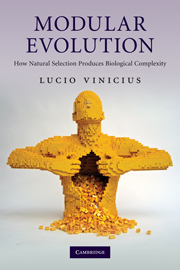Book contents
- Frontmatter
- Contents
- Preface
- 1 From natural selection to the history of nature
- 2 From the units of inheritance to the origin of species
- 3 Multicellularity and the developmental code
- 4 Life cycle evolution: life and death of the soma
- 5 Sex and its consequences: the transition that never happened
- 6 Animal societies: the case of incomplete evolutionary transitions
- 7 The new ‘Chain of Being’: hierarchical evolution and biological complexity
- References
- Index
6 - Animal societies: the case of incomplete evolutionary transitions
Published online by Cambridge University Press: 05 June 2012
- Frontmatter
- Contents
- Preface
- 1 From natural selection to the history of nature
- 2 From the units of inheritance to the origin of species
- 3 Multicellularity and the developmental code
- 4 Life cycle evolution: life and death of the soma
- 5 Sex and its consequences: the transition that never happened
- 6 Animal societies: the case of incomplete evolutionary transitions
- 7 The new ‘Chain of Being’: hierarchical evolution and biological complexity
- References
- Index
Summary
The study of animal societies, now deeply engrained in evolutionary theory, was first undertaken by philosophers dreaming of the foundation of ideal human societies. Published in 1651, Thomas Hobbes' Leviathan is one of many treatises grieving about the chasm between the real world of human suffering and the perfect society that we could have built together. According to Hobbes, humans were naturally in an eternal state of war against each other, as expressed by the classic aphorism homo homini lupus est (man is a wolf to man); the essence of human sociability is generalised conflict. In contrast to human societies, Hobbes believed that living organisms were examples of collective harmony in which individual organs or parts serve the higher purpose of survival of the whole. For this reason he proposed that the solution to human social misery should be organic: humans should willingly oppose individualism, constrain self-interest and define themselves as separate organs of a higher-level whole, the State or social Leviathan. The voluntary creation of a higher-level social organism based on co-operation and division of labour would be the ultimate antidote to social conflict, selfishness and war.
Soon it was discovered that the dream of a Leviathan, and the analogy between ideal co-operative societies and real living organisms, ran much deeper than Hobbes could have ever imagined. With his Micrographia published in 1665, Robert Hooke communicated the discovery both of the living cell and of multicellularity; this finding, later developed into the modern cell theory by Schleiden and Schwann, meant that all macroscopic organisms are in fact living societies of cells, divided by structure and function, and serving the purpose of the survival of multicellular wholes.
- Type
- Chapter
- Information
- Modular EvolutionHow Natural Selection Produces Biological Complexity, pp. 154 - 185Publisher: Cambridge University PressPrint publication year: 2010



